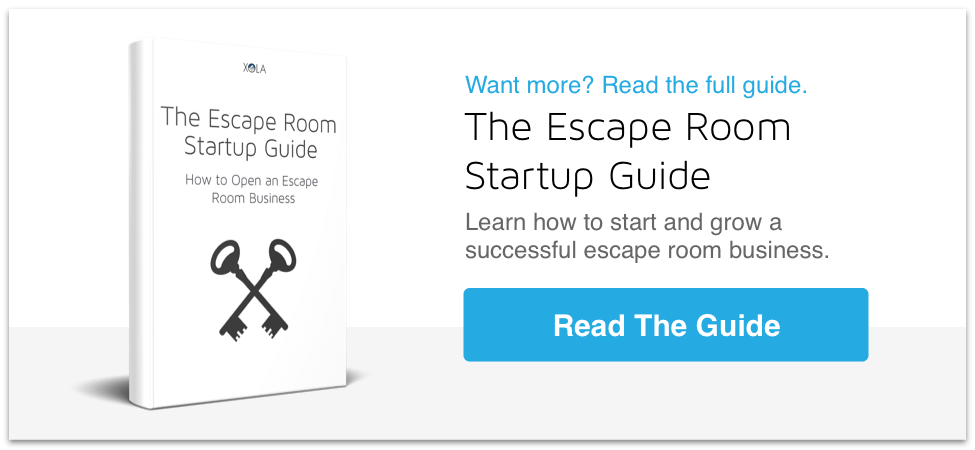
Startup costs account for the largest single set of expenses an new escape room owner has to pay to get the business up and running. Expenses include high-cost items like the down payment and rent on a property, construction costs, insurance, and more.
In order to pay the upfront expenses necessary to start your escape room business, you will need to secure funding. There are a few different ways to fund the startup costs for your escape room business.
1. Personal Savings
If you can, using your own personal savings might be one of the most appealing ways to fund your escape room business, because you won’t owe anyone else in the process and will have total control over the business. However, if the business fails or if something goes wrong, you are solely liable.
2. Business Partner
Many owners choose to fund their escape room venture by pooling resources with one or more business partners. If the business partners have complementary skill sets (e.g. a creative co-founder and a business-savvy co-founder) they can benefit from the shared knowledge. However, it is important that the partners have a strong relationship since they will share ownership of the company, and work closely together on important issues.
3. Family and Friends
Another way to fund your escape room business is to ask family, friends, and close associates to help fund your venture. This type of funding relies heavily on relationships rather than an assessment of the feasibility of the business. It can provide a quick funding option and flexible payment methods, but may have tax implications. And failing to pay those people back could put undue strain on important relationships.
4. Crowdfunding
It is possible to raise money on platforms like Kickstarter or GoFundMe, but the percent of escape room crowdfunding campaigns that have successfully reached their target funding goal is low. Room Escape Artist did a revealing analysis of companies attempting to crowdfund their escape rooms, which you can find here.
5. Investors
Investors, including wealthy individuals and venture capital funds, can provide funding in exchange for equity and other forms of profit sharing. They can often offer useful business expertise, but they may force you to give up a lot more control over your escape room business than other alternatives.
6. Loans
Bank and government loans are a popular source of funding for many small businesses. Before taking a loan, it’s important to understand the various options available, and the fees and interest rates that come with them. The funding is often quick, assuming you qualify, but may require a lot of research and paperwork. Depending on the loan, you may also be required to pay it back whether or not your escape room business succeeds.
7. Combine Sources
Depending on the estimated costs, you may choose to combine a number of different funding options. For example, if you don’t have the savings necessary to fund your entire venture (or want to limit the risk) you might consider using a portion of your own savings and applying for a small business loan.
Leave Space for Extra Costs
Escape room startups tend to end up costing more than expected, and you need to be prepared. When you’re estimating your costs and funding needs, be sure to include extra capital for unexpected expenses. For certain expenses, like construction and design costs, owners suggest accounting for two or three times the amount you think it will cost.
According to Michael Hill, owner at Limitless Escape Games, “Double or triple whatever time, money, and energy you think it’s going to cost you. If you’ve got a budget of $100 it’s going to be $300. It really is.”
One way to ensure that you set realistic expectations on startup costs and funding needs is to lay out a detailed business plan. To get started, we have prepared an escape room business plan guide and worksheets, based on the experience of successful escape room owners.
We also included never seen before monthly revenue figures for the first 12 months of operation to help get a realistic estimate of the growth of an new escape room business.
Conclusion
Starting an escape room business requires upfront funding to cover a number of startup costs. There are a few ways to fund your business that you can choose from based on your personal situation and experience.
Regardless of how you fund your escape room business, keep in mind that some expenses might end up costing more than anticipated. When making estimates, make sure you leave room for unexpected costs.
To help you get a better understanding of the costs, as well as revenue you can expect, we have interviewed escape room owners and compiled what they have learned first hand in our Escape Room Startup Guide.
As a bonus, we added new research findings to the guide, including the average monthly revenue of escape room startups in the US and Canada during their first year of operations.





